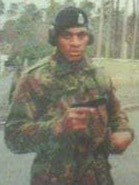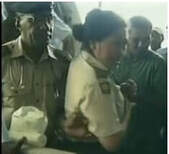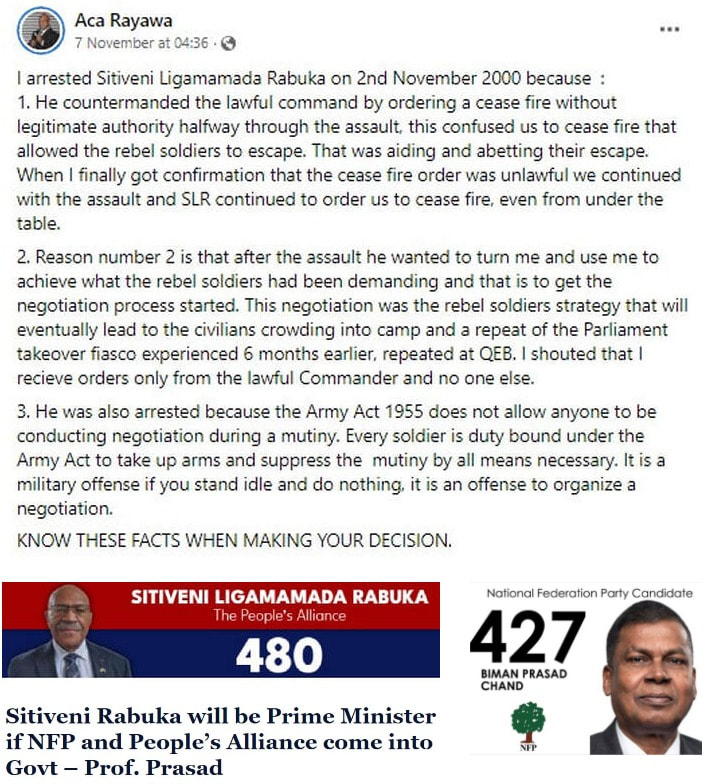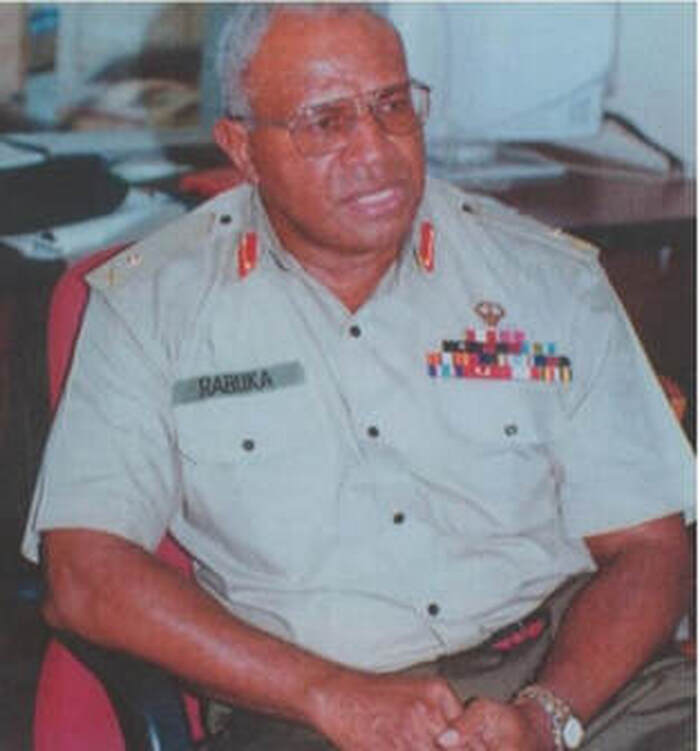'SHOOT THE BASTARD':
The former Sandhurst trained soldier and former DPP ACA RAYAWA had clear orders from the RFMF High Command to put a bullet through Rabuka's head when Rayawa arrested him on 2 November 2000.
*Rabuka is refusing to admit or deny that he was hiding under the table at the RFMF and giving orders for a ceasefire.
*His political side-kick BIMAN PRASAD wants Coupist and Bloody Mutiny Suspect as new Prime Minister after the 14 December 2022.
ACA RAYAWA:
"We must NEVER allow Rabuka back to control the armory and the weapons and soldiers of this our beloved Fiji, NEVER."
Fijileaks: Our Founding Editor-in-Chief, to whom hundreds of documents and photos were leaked after the Bloody 2 November 2000 mutiny, was completing a book on the rebellion, jointly with deported Fiji Sun publisher RUSSELL HUNTER when sadly, Hunter passed away. History must be recorded. Below is abridged extract from Chapter One:
Bloodbath at the Barracks
By RUSSELL HUNTER and VICTOR LAL
Chapter One: Bloodbath at the barracks
Monday November 2, 2000 was a typical Suva day for that time of year - a balmy day with a gentle breeze from the ocean. A clear sky, resembling the colour of the national flag, looked down on a time of minimal activity at the Queen Elizabeth II barracks (QEB), the Republic of Fiji Military Forces home.
Nobody inside or outside of the military could have foreseen the storm that was about to break. Well, almost nobody.
On that lazy day Lance Corporal Simione Rawaileba, expecting little in the way of activity, returned from the usual lunch of dhal and rice, and lay down to rest in his bunk in the barracks. He slept peacefully never suspecting that it was a slumber from which he would not awake.
As he gently snored, a member of the Counter Revolutionary Warfare group (CRW), an elite force within the RFMF, stole silently into his room on a freelance murder mission.
Rawaileba, a former CRW member, had given the man some trouble in the past and would that day pay for it today with his life.
The man walked silently to within a metre of the sleeping corporal, drew a Browning 9mm automatic pistol and shot him once in the back of the head at a range of perhaps six inches. The unfortunate and innocent corporal died instantly, his brains and blood splattered across the room. It was the first of many shots, and eight deaths, in an afternoon that would alter Fiji forever.
The shooter should not have been there. It was not part of the plan by CRW commander Captain Shane Stevens, who later received a death sentence for his role in what followed. It was later commuted to life sentence. The dead man and his murderer were cousins, and the killer was to hang himself the next day in a fit of remorse – or possibly in fear of the knowledge of what fate might await him at the hands of the loyalist troops, for worse was to follow.
The CRW, formerly known as the First Meridian Squadron (or 1MS), was the brainchild of the father of the nation’s coup culture –then Lieutenant Colonel Sitiveni Rabuka. The CRW were highly trained outfit – some member’s having had experience with Britain’s Special Air Services Regiment. The CRW also had been heavily involved in all three of the nation’s previous coups. The first two were executed by its founder, the third by failed businessman George Speight who was almost certainly no more than a frontman. He is in the high-security wing of Naboro Prison serving a life sentence commuted from the death penalty. He is likely to be joined by the military officers responsible for putting him there.
The 25-strong CRW team moved into to the armoury. Helping themselves to automatic assault rifles and stun grenades they set about their mission – to capture – some say to kill - their commander, the now self-appointed and illegal dictator and illegal Commodore Josaia Voreqe Bainimarama.
The Commodore was finishing lunch in the officers’ mess when the first shot rang out. Fearing the worst, his security detail hustled him out of there and into his office where it soon became apparent that a full scale mutiny was in progress.
It went so well for the mutineers that the Commodore’s men practically carried him the short distance from his office to the sheer-sloped 100ft deep ravine that still separates the QEII barracks from the residential and light industrial suburb of Namadi Heights and thence to the safety of the main naval base in the port of Suva. They had scrambled through a rear window just as a heavily armed team of CRW soldiers broke down the front door. The commander escaped certain death by a matter of seconds, a terrifying experience that haunts him still.
Meanwhile the dull multiple thuds of automatic fire and the sharp blasts of grenades echoed throughout Suva. The media, desperate for news of what was in progress, rushed to the “camp” as QEB is universally known. Parked at the top of the ravine overlooking the barracks the Fiji Times van took a stray round and moved to a safer distance. A family in Samabula was later to tell of another stray round that smashed through their window narrowly missing the head of the household as he sat down to lunch with wife and children.
What was not known at that time was that the loyal soldiers (the majority of the infantry division, led by the then Brigadier-General Pita Driti), gathered what weapons and ammunition that could be found and mounted an organized counterattack.
The CRW had lost the advantage of surprise, they were now heavily outnumbered and the promised support of 2,000 civilian demonstrators had failed to materialize at the camp gates. The game was up. Some members took flight and were soon captured but most laid down their arms and prepared themselves to take what was coming to them. Had they known what that was, they might have acted differently.
Three loyalist soldiers lay dead in the camp. The remaining 20 or so wounded would all recover later.
But the scar of that day, has never healed.
Who was behind the death, carnage, and destruction that day, on 2 November 2000?
Chapter One: Bloodbath at the barracks
Monday November 2, 2000 was a typical Suva day for that time of year - a balmy day with a gentle breeze from the ocean. A clear sky, resembling the colour of the national flag, looked down on a time of minimal activity at the Queen Elizabeth II barracks (QEB), the Republic of Fiji Military Forces home.
Nobody inside or outside of the military could have foreseen the storm that was about to break. Well, almost nobody.
On that lazy day Lance Corporal Simione Rawaileba, expecting little in the way of activity, returned from the usual lunch of dhal and rice, and lay down to rest in his bunk in the barracks. He slept peacefully never suspecting that it was a slumber from which he would not awake.
As he gently snored, a member of the Counter Revolutionary Warfare group (CRW), an elite force within the RFMF, stole silently into his room on a freelance murder mission.
Rawaileba, a former CRW member, had given the man some trouble in the past and would that day pay for it today with his life.
The man walked silently to within a metre of the sleeping corporal, drew a Browning 9mm automatic pistol and shot him once in the back of the head at a range of perhaps six inches. The unfortunate and innocent corporal died instantly, his brains and blood splattered across the room. It was the first of many shots, and eight deaths, in an afternoon that would alter Fiji forever.
The shooter should not have been there. It was not part of the plan by CRW commander Captain Shane Stevens, who later received a death sentence for his role in what followed. It was later commuted to life sentence. The dead man and his murderer were cousins, and the killer was to hang himself the next day in a fit of remorse – or possibly in fear of the knowledge of what fate might await him at the hands of the loyalist troops, for worse was to follow.
The CRW, formerly known as the First Meridian Squadron (or 1MS), was the brainchild of the father of the nation’s coup culture –then Lieutenant Colonel Sitiveni Rabuka. The CRW were highly trained outfit – some member’s having had experience with Britain’s Special Air Services Regiment. The CRW also had been heavily involved in all three of the nation’s previous coups. The first two were executed by its founder, the third by failed businessman George Speight who was almost certainly no more than a frontman. He is in the high-security wing of Naboro Prison serving a life sentence commuted from the death penalty. He is likely to be joined by the military officers responsible for putting him there.
The 25-strong CRW team moved into to the armoury. Helping themselves to automatic assault rifles and stun grenades they set about their mission – to capture – some say to kill - their commander, the now self-appointed and illegal dictator and illegal Commodore Josaia Voreqe Bainimarama.
The Commodore was finishing lunch in the officers’ mess when the first shot rang out. Fearing the worst, his security detail hustled him out of there and into his office where it soon became apparent that a full scale mutiny was in progress.
It went so well for the mutineers that the Commodore’s men practically carried him the short distance from his office to the sheer-sloped 100ft deep ravine that still separates the QEII barracks from the residential and light industrial suburb of Namadi Heights and thence to the safety of the main naval base in the port of Suva. They had scrambled through a rear window just as a heavily armed team of CRW soldiers broke down the front door. The commander escaped certain death by a matter of seconds, a terrifying experience that haunts him still.
Meanwhile the dull multiple thuds of automatic fire and the sharp blasts of grenades echoed throughout Suva. The media, desperate for news of what was in progress, rushed to the “camp” as QEB is universally known. Parked at the top of the ravine overlooking the barracks the Fiji Times van took a stray round and moved to a safer distance. A family in Samabula was later to tell of another stray round that smashed through their window narrowly missing the head of the household as he sat down to lunch with wife and children.
What was not known at that time was that the loyal soldiers (the majority of the infantry division, led by the then Brigadier-General Pita Driti), gathered what weapons and ammunition that could be found and mounted an organized counterattack.
The CRW had lost the advantage of surprise, they were now heavily outnumbered and the promised support of 2,000 civilian demonstrators had failed to materialize at the camp gates. The game was up. Some members took flight and were soon captured but most laid down their arms and prepared themselves to take what was coming to them. Had they known what that was, they might have acted differently.
Three loyalist soldiers lay dead in the camp. The remaining 20 or so wounded would all recover later.
But the scar of that day, has never healed.
Who was behind the death, carnage, and destruction that day, on 2 November 2000?













